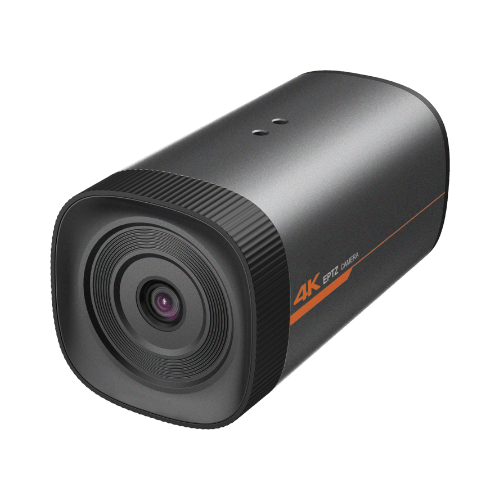How to Cleverly Use 4K Cameras In the HD World?
2K and 1080pHD resolutions are back in focus at NAB. That’s right, 2K, that’s exactly what I’m trying to say. The use of 1080p is slowly being accepted in the broadcast and film fields, but it is not as slow as 4K.
After 2K was paid attention to by camera manufacturers with “revolutionary” marketing strategies, they chose to devote themselves to the 4K consumer market. What should we do with Multicam programming? An ePTZ camera or a camera split system might be a good choice.

What is an ePTZ camera?
CCTV and surveillance cameras brought PTZ cameras into the mainstream for the first time, driving the creation of ePTZ cameras. The ePTZ camera uses the exact angle of the camera image to digitally segment and is a new type of camera that creates a photo of the lens.
When SD cameras still occupy the mainstream market, the application of HD cameras has been quietly born. With the continuous development of imaging technology, HD cameras are also being replaced by 4K cameras.
As a portable camera VT-CA403N launched by ValueSTek has the effect of multi-camera shooting. It adopts the concept design of the ePTZ camera. Unlike the single camera of other camcorders, this product can simulate shooting with multiple cameras.
It is a simple yet powerful camera designed for beginners. So, with such a convenient and time-saving multi-screen new camera, what is the difference between its picture angle and composition and traditional multi-camera shooting? What can be solved?
Let’s think about the application guidelines for traditional Multicam:
Except for the safety camera, most other camera positions either capture the medium shot or the close-up shot, which is inseparable from the premise of the “safety camera big picture.” That is to say, this kind of picture can be partially intercepted from a relatively macro panoramic image and applied as an independent video.
As it happens, after the full promotion of the 4K era, the details and information of the picture have grown explosively. However, terminal video viewing groups and playback devices are still in the HD era, which makes the extra details useless.
Then think about it from another angle. Suppose a performance needs to be broadcast live, and the drummer, guitarist, bassist, and vocalist all need to be filmed. Can we use a 4K camera to shoot panoramic images at fixed points and select the desired HD images? “Separately split” out and become a multi-channel signal source? If the operation can be used flexibly, it becomes only one camera, which can do multi-camera live broadcasts while considering the playback quality.

If this theory is feasible, then the simple frontal screen segmentation may be boring. We can use the same principle to place a 4K camera on the traditional No. 1 or No. 3 camera and then use the same guide. Split the setting screen’s output so you can get eight channels or even more signals.
As a result, there are panoramic safety shots from the front and sides, soulful close-ups of the lead singer, mid-range shots of the superb fingering of the bassist and guitarist, and multi-faceted close-ups of the drummer Megatron. In this way, the richness of the picture will be further improved, and will it be able to broadcast programs in a manner comparable to professional multi-camera applications?

However, this is not enough to solve the problem of many 4K professional camera owners. Who wants a 4K camera with a smaller sensor? ValueSTek chose to go deep into streaming, the future trend of this media market, heralding live production as the best option. Practitioners need to perform on-site editing and built-in lens motion functions and retain ePTZ cameras with high-standard video of radio and television.
We may be able to find the answer on the 4K camera screen splitter, which can produce eight camera lenses at the same time with only the input signal of two 4K cameras. The highest quality 4K movement can capture 12G SDI input at this stage.
When the ePTZ camera can receive input signals from two 4K cameras at the same time, it provides two viewing angles, giving the coverage required for professional live production, and can output HD signals to other switchers, cameras, ISO recorders, and any SDI input interface This kind of high compatibility makes 4K early users breathe a sigh of relief.
Under the background that consumers are still satisfied with 1080p, the concept of ePTZ cameras and camera screen segmentation will still be the infrastructure of 4K in the next few years.
Although 4K cameras have been used in film and TV production for several years, 4K shooting is still mostly converted to 2K and shown in theaters. The advantage of capturing images at 4K resolution is color grading and capturing images without affecting the quality of the photos. However, it still needs to be converted to HD output anyway.

UHD TVs entered the market when TV makers suffered from a saturation of the large-screen LCD TV market and sluggish sales. It is precise because of this that consumers have the opportunity to experience 4K high-definition experience. The online streaming media Netflix has already provided 4K resolution content first. Although the upper limit of the available bandwidth must reduce the bitrate, Netflix has occupied 20%~30% of the network bandwidth in the United States, so it is expected to become the leader of the 4K generation, and at the same time by bandwidth. The conflict stalled the remaining network providers.
































